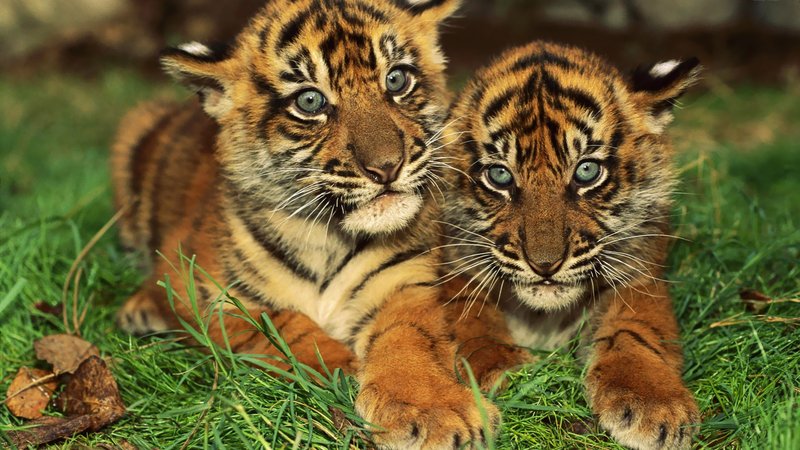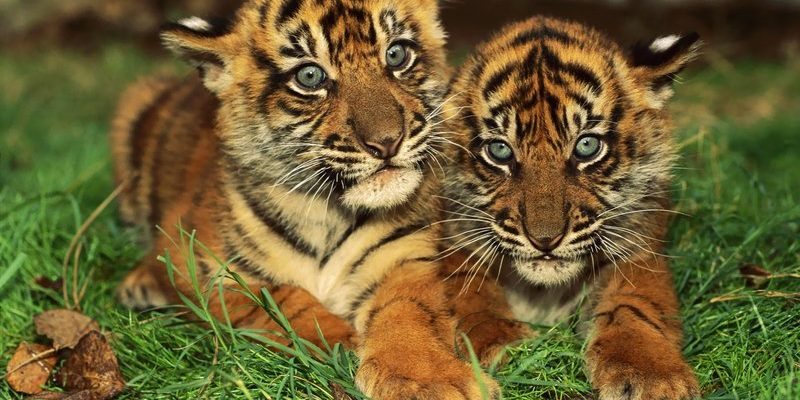
Imagine having a conversation about your favorite animal over coffee. You might rave about their strength, beauty, or even their hunting skills. But what if I told you that some of those perceptions might not be entirely accurate? Today, we’re diving deep into the world of Bengal tigers, exploring the truths behind the myths that often cloud our understanding of these magnificent beasts.
Myth 1: Bengal Tigers Are Ferocious Man-Eaters
One of the most common misconceptions about Bengal tigers is that they are ruthless man-eaters, lurking in the shadows just waiting for an opportunity to pounce on unsuspecting humans. While it’s true that tigers are powerful predators, the reality is much more nuanced.
Bengal tigers usually prefer to hunt their natural prey, which includes deer, wild boar, and buffalo. The notion that they actively target humans is misleading. In fact, attacks are often a result of *desperation*—for instance, if a tiger is injured or its natural prey is scarce. You might picture a hungry tiger roaming a village, but the truth is, they’d much rather stick to the dense jungles where they feel safe.
Furthermore, in many regions, efforts are being made to mitigate human-tiger conflict by educating local communities and implementing protective measures for both the wildlife and people. Understanding this can help us appreciate the true nature of Bengal tigers and their role in the ecosystem rather than viewing them solely as threats.
Myth 2: All Tigers Have Stripes That Are Unique to Each Individual
You’ve probably heard that each Bengal tiger’s stripes are as unique as human fingerprints. While this statement has a grain of truth, it oversimplifies a few important points. Yes, the stripe patterns of Bengal tigers do vary, but the idea of using these patterns for identification is more complicated than it sounds.
It’s true that the stripes help camouflage tigers in their natural habitat, but identifying them based solely on their stripe patterns can be challenging. Factors like seasonal changes, growth patterns, and even the wear and tear of age can affect visibility. As conservationists study tiger populations, they often rely on more than just stripes; they might also use advanced techniques like DNA testing or tracking collars to get accurate information about individual tigers.
So, while it’s a neat concept to think that every tiger is a walking canvas of unique art, the reality of identification in the wild is a bit more intricate and requires scientific methods.
Myth 3: Bengal Tigers Are Only Found in India
Though you might associate Bengal tigers primarily with India, this misconception overlooks their broader range. Yes, India is home to the largest population of these magnificent felines, but Bengal tigers can also be found in other countries, including Bangladesh, Nepal, and Bhutan. These majestic cats thrive in various habitats—ranging from the mangroves of the Sundarbans to the foothills of the Himalayas.
It’s important to recognize that conservation efforts are essential across these nations since the survival of Bengal tigers is interconnected. Habitat loss and poaching threaten their existence, making it crucial for international cooperation in conservation strategies. So, the next time someone tells you that Bengal tigers are exclusive to India, you can confidently remind them of their diverse habitats!
Myth 4: Bengal Tigers Are Not Endangered
You might think that because Bengal tigers are often depicted in popular culture and have a strong presence in wildlife documentaries, they are thriving. Unfortunately, that’s not the case. The truth is that Bengal tigers are classified as endangered, with their numbers declining due to several threats.
Habitat destruction is one of the most significant challenges they face. As human populations expand, forests are cut down for agriculture and development, leaving tigers with less space to roam and hunt. Additionally, poaching remains a serious concern, as tigers are targeted for their beautiful fur and body parts, which are used in traditional medicine.
Conservation programs focus on protecting these majestic animals by creating wildlife reserves and educating communities about the importance of preserving their habitats. Recognizing that Bengal tigers are endangered is vital in supporting efforts to safeguard their future.
Myth 5: Bengal Tigers Are Solitary and Have No Social Behavior
When you picture a Bengal tiger, it’s easy to think of them as solitary hunters prowling their territory alone. While it’s true that tigers are generally solitary compared to other big cats like lions, they do have social behaviors worth noting.
Tigers have a complex social structure that involves marking their territories and communicating with other tigers. For instance, they’ll leave scent markings to let others know where they’ve been and establish their presence. Interestingly, mother tigers exhibit nurturing social behavior by raising their cubs together, teaching them vital survival skills until they can fend for themselves.
So, while tigers might prefer their own space, they’re not entirely loners. Understanding these nuances helps us appreciate their social dynamics within the wild.
Myth 6: Bengal Tigers Are Always Orange with Black Stripes
You might think that every Bengal tiger you come across in pictures or documentaries is the same—bold orange with striking black stripes. However, Bengal tigers can actually vary in their coloration. While the classic orange and black is the most recognized, some tigers can be found in a rare color phase known as “white.”
White Bengal tigers have a genetic condition that affects their pigmentation, resulting in a stunning coat that ranges from white to cream, with black or dark brown stripes. These beautiful creatures are rare and have often been the subject of both admiration and controversy regarding their breeding in captivity.
The existence of white tigers serves as a reminder that the Bengal tiger species is diverse and captivating. So, when you think of these big cats, remember that there’s more than just one “look” to appreciate.
Myth 7: Bengal Tigers Are Not Important to Ecosystem Health
You might wonder why the conservation of Bengal tigers matters, especially if you don’t live anywhere near their habitat. Here’s the thing: Bengal tigers play a critical role in maintaining the health of their ecosystems. As apex predators, they help to regulate prey populations, which in turn maintains the balance of the environment.
When tiger populations decline, the balance can easily tip. For example, if there are too many herbivores, they may overgraze vegetation, leading to habitat degradation that affects countless other species. By protecting Bengal tigers, we’re not just safeguarding one magnificent species; we’re also preserving the entire ecosystem, including the various plants and animals that depend on it.
Recognizing the ecological importance of Bengal tigers can help shift the perspective from seeing them merely as fascinating animals to understanding their role as vital players in their habitats.
In conclusion, it’s crucial to separate fact from fiction when it comes to Bengal tigers. These incredible animals are not just fearsome predators or solitary figures in the jungle; they are complex beings facing significant threats to their survival. By understanding the truths behind these misconceptions, we can take steps toward better conservation efforts and deeper appreciation for these majestic felines. Let’s work together to protect them and ensure that future generations can admire their beauty in the wild.

